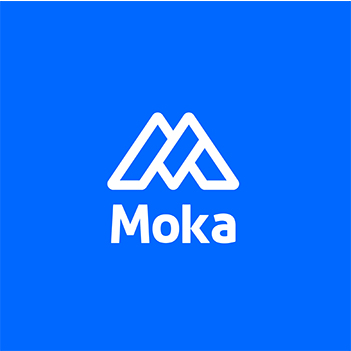Building a Diverse Team in Malaysia with Simple ATS Tips

In Malaysia, embracing diversity and fostering inclusion in the workplace is more than a moral obligation; it’s a strategic advantage. Studies reveal that companies with diverse teams are 35% more likely to outperform their competitors. A diverse workforce brings fresh perspectives, drives innovation, and enhances decision-making. However, managing this diversity effectively can be challenging. This is where an applicant tracking system becomes invaluable. By streamlining recruitment processes and reducing bias, it empowers businesses in Malaysia to build inclusive teams that reflect the nation’s rich cultural tapestry.
Key Takeaways
Diversity in the workplace is a strategic advantage, leading to improved performance and innovation.
An Applicant Tracking System (ATS) can help reduce bias in recruitment by focusing on qualifications rather than personal characteristics.
Implementing diversity filters in your ATS ensures that your hiring process actively promotes inclusivity.
Writing inclusive job descriptions is crucial; avoid biased language to attract a wider range of candidates.
Utilize ATS analytics to track diversity metrics and make data-driven decisions to enhance your recruitment strategies.
Automation in an ATS streamlines hiring processes, ensuring fair consideration for all candidates and promoting an equitable recruitment environment.
Regularly review and adjust your diversity criteria to align with your evolving inclusion goals and celebrate your progress.
Understanding Diversity and Inclusion in the Malaysian Workplace

Defining Diversity in Malaysia
Diversity in Malaysia reflects the nation’s unique cultural, ethnic, and religious composition. With a population comprising Malays, Chinese, Indians, and indigenous groups, your workplace has the potential to mirror this rich tapestry. Diversity goes beyond ethnicity. It includes gender, age, educational background, and even professional experiences. By embracing these differences, you can create an environment where employees feel valued and respected.
Incorporating diversity into your workplace means recognizing the strengths that each individual brings. For example, multilingual employees can help your business connect with a broader audience. This is especially important in Malaysia, where businesses often cater to diverse customer bases. When you prioritize diversity, you position your organization to thrive in a multicultural society.
The Importance of Managing Workplace Diversity for Business Success
Managing diversity effectively is not just a trend; it’s a necessity for business success in Malaysia. A diverse workplace fosters innovation by encouraging employees to share different perspectives. This leads to creative problem-solving and better decision-making. Companies that embrace diversity often outperform their competitors because they can adapt to changing market demands more effectively.
To manage diversity successfully, you need to implement strategies that promote inclusion. Cultural sensitivity training can help your team understand and respect different backgrounds. Mentorship programs can support underrepresented groups, ensuring everyone has equal opportunities to grow. Flexible working arrangements can accommodate employees with varying needs, making your workplace more inclusive.
Promoting diversity in recruitment also helps your business stay relevant. By hiring individuals from different backgrounds, you can connect with a wider audience. This approach not only enhances your brand image but also strengthens your team’s ability to serve diverse customers. As Sekhar Garisa suggests, taking immediate steps to foster inclusion can drive meaningful change in your organization.
“Diversity is being invited to the party; inclusion is being asked to dance.” This quote highlights the importance of creating an inclusive environment where everyone feels they belong.
By managing diversity effectively, you can build a workplace that reflects Malaysia’s vibrant culture. This not only benefits your employees but also positions your business for long-term success.
The Role of an Applicant Tracking System in Managing Diversity
Reducing Bias in Recruitment
Recruitment often involves unconscious bias, which can hinder your efforts to build a diverse workplace. An applicant tracking system helps you minimize this bias by using algorithms that focus on qualifications and skills rather than personal characteristics. By automating the initial screening process, the system ensures that every candidate receives fair consideration based on merit.
For example, the system can anonymize applications by removing names, photos, and other identifiers. This approach allows you to evaluate candidates solely on their experience and capabilities. Companies that use such tools report significant improvements in hiring outcomes. Studies show that organizations implementing these strategies experience a 36% increase in gender diversity and a 24% rise in ethnic diversity among new hires. These results demonstrate how technology can help you create a more inclusive recruitment process.
“Technology is a great equalizer in recruitment. It removes barriers and promotes fairness,” as industry experts often emphasize. By leveraging an applicant tracking system, you can take a proactive step toward reducing bias and fostering inclusion in your workplace.
Streamlining Hiring Processes for Inclusion
A streamlined hiring process is essential for promoting inclusion in your workplace. An applicant tracking system simplifies recruitment by organizing applications, scheduling interviews, and managing communication with candidates. This efficiency allows you to focus on attracting and retaining diverse talent.
In Malaysia, where multilingualism and cultural diversity are common, an applicant tracking system can support job postings in multiple languages. This feature ensures that your job opportunities reach a broader audience, including underrepresented groups. By making your hiring process more accessible, you encourage candidates from various backgrounds to apply.
Additionally, the system enables you to customize workflows that align with your diversity goals. For instance, you can set up alerts to ensure that your candidate pool includes individuals from different demographics. These features not only save time but also help you build a team that reflects the rich cultural tapestry of Malaysia.
Tracking and Enhancing Diversity Metrics
Tracking diversity metrics is crucial for measuring the success of your inclusion initiatives. An applicant tracking system provides detailed analytics that help you monitor the composition of your workforce. These insights allow you to identify gaps and make data-driven decisions to improve your recruitment strategies.
For example, the system can generate reports on the gender, ethnicity, and age distribution of your applicants and hires. Companies using these tools have reported a 60% increase in the diversity of candidates hired. By analyzing this data, you can adjust your hiring practices to ensure they align with your diversity objectives.
Moreover, tracking metrics helps you set realistic goals for your workplace. You can measure progress over time and celebrate milestones that reflect your commitment to inclusion. This transparency not only enhances your reputation but also attracts top talent who value a diverse and inclusive environment.
Incorporating an applicant tracking system into your recruitment process empowers you to manage diversity effectively. By reducing bias, streamlining hiring, and tracking metrics, you can create a workplace that thrives on inclusion and innovation.
Simple ATS Tips for Managing Workplace Diversity

Setting Diversity Filters and Criteria
An applicant tracking system can help you set specific filters and criteria to align with your diversity goals. By using these features, you ensure that your hiring process actively promotes diversity in hiring. For instance, you can configure the system to prioritize candidates from diverse backgrounds, such as those with multilingual skills or unique professional experiences. This approach helps you build an inclusive workplace culture that reflects Malaysia's rich cultural diversity.
Diversity filters also allow you to focus on qualifications and skills rather than personal characteristics. This ensures fairness in candidate selection and reduces the risk of unconscious bias. For example, you can use the system to anonymize applications, removing identifiers like names or photos. This method creates a level playing field for all applicants, fostering equality in your recruitment process.
By setting clear diversity criteria, you can track your progress toward achieving your diversity goals. Regularly reviewing these filters ensures they remain relevant and effective. This proactive approach not only supports managing workplace diversity but also strengthens your organization's commitment to inclusion.
Writing Inclusive Job Descriptions
Job descriptions play a crucial role in promoting diversity and attracting candidates from diverse backgrounds. An applicant tracking system can guide you in crafting inclusive job postings that appeal to a wide range of applicants. For example, the system can highlight biased language or suggest alternative phrasing to ensure your descriptions are neutral and welcoming.
When writing job descriptions, focus on the skills and qualifications required for the role. Avoid using jargon or terms that may discourage certain groups from applying. For instance, instead of stating "native English speaker," you can specify "proficient in English." This small change makes your posting more inclusive and encourages applications from multilingual candidates, which is particularly valuable in Malaysia's multicultural workplace.
Additionally, emphasize your organization's commitment to diversity and inclusion in the job description. Mention any diversity and inclusion training programs or initiatives your company offers. This demonstrates your dedication to creating an inclusive workplace culture and attracts candidates who value equality and fairness.
Leveraging ATS Analytics for Diversity Insights
Analytics provided by an applicant tracking system can offer valuable insights into your diversity and inclusion efforts. These tools allow you to monitor diversity metrics at every stage of the hiring process, from application to promotion. By analyzing this data, you can identify areas where improvements are needed and refine your strategies accordingly.
For example, the system can generate reports on the demographics of your applicants and hires. This data helps you assess whether your recruiting efforts align with your diversity goals. If you notice gaps, you can adjust your approach to attract candidates from underrepresented groups. This data-driven decision-making ensures your hiring process remains fair and inclusive.
ATS analytics also support bias mitigation strategies by identifying patterns that may indicate unconscious bias. For instance, if certain demographics consistently drop out at specific stages, you can investigate and address potential barriers. This continuous improvement fosters an inclusive workplace culture and enhances employee engagement.
By leveraging these insights, you can measure the success of your diversity initiatives and celebrate milestones. Transparent reporting not only boosts your organization's reputation but also reinforces your commitment to promoting diversity and inclusion.
Using Automation to Promote Fair Hiring Practices
Automation in an applicant tracking system (ATS) can revolutionize how you approach fair hiring practices. By automating repetitive tasks, you can focus on managing diversity effectively while ensuring every candidate receives equal consideration. Automation eliminates human error and reduces unconscious bias, creating a more equitable recruitment process.
One way automation promotes fairness is through anonymized screening. The ATS can automatically remove personal identifiers like names, photos, or addresses from applications. This ensures that you evaluate candidates based solely on their qualifications and skills. For example, instead of being influenced by a candidate’s background, you can focus on their professional achievements and potential contributions to your team.
Automated workflows also streamline the hiring process, making it more inclusive. The system can send reminders to hiring managers to review diverse candidate pools or flag applications that meet specific diversity criteria. These features help you stay aligned with your diversity goals without adding extra manual effort. Additionally, automation ensures consistent communication with all applicants, reducing the risk of overlooking qualified individuals.
Another advantage of automation is its ability to detect biased language in job descriptions. The ATS can analyze your postings and suggest neutral alternatives, ensuring they appeal to a broader audience. For instance, it might recommend replacing terms like “aggressive” with “proactive” to avoid discouraging certain groups from applying. This small adjustment can significantly impact how diverse candidates perceive your organization.
Automation also supports tracking diversity metrics in real time. The ATS can generate reports on the demographics of applicants, interviewees, and hires. These insights allow you to identify patterns and address potential barriers in your hiring process. For example, if you notice a lack of representation at specific stages, you can adjust your strategies to improve inclusivity. This data-driven approach ensures continuous improvement in managing diversity.
By leveraging automation, you can create a hiring process that prioritizes fairness and inclusivity. It empowers you to build a team that reflects the rich diversity of Malaysia while fostering an environment where employees feel valued and respected.
Diversity and inclusion are vital for creating a thriving workplace in Malaysia. By embracing these principles, you unlock innovation, improve decision-making, and foster a culture where every employee feels valued. An applicant tracking system simplifies this journey. It reduces bias, streamlines recruitment, and provides actionable insights to enhance your diversity efforts. These tools ensure fairness and help you build a team that reflects Malaysia’s rich cultural landscape. Start adopting these strategies today to create a more inclusive workplace that drives long-term success.
FAQ
What is an Applicant Tracking System (ATS)?
An Applicant Tracking System (ATS) is software designed to streamline the recruitment process. It helps you manage job applications, screen candidates, and organize hiring workflows. By automating repetitive tasks, an ATS saves time and ensures a fair evaluation of applicants based on their skills and qualifications.
How does an ATS promote diversity and inclusion?
An ATS promotes diversity by reducing human bias in recruitment. It uses algorithms to focus on candidates' qualifications and experience rather than personal attributes. Features like anonymized applications and diversity filters ensure fairness and objectivity in the hiring process. This approach fosters an inclusive workplace culture.
Can an ATS help reduce unconscious bias in hiring?
Yes, an ATS minimizes unconscious bias by automating candidate screening. It removes identifiers like names or photos from applications, allowing you to evaluate candidates solely on their skills and experience. This process ensures every applicant receives equal consideration, promoting fairness in recruitment.
How does an ATS improve the hiring process?
An ATS improves hiring by organizing applications, scheduling interviews, and managing communication with candidates. It also provides analytics to track diversity metrics and identify gaps in your recruitment strategy. These features enhance efficiency and help you attract a diverse range of talent.
What are diversity filters in an ATS?
Diversity filters are settings within an ATS that prioritize candidates from underrepresented groups. For example, you can configure the system to highlight applicants with multilingual skills or unique professional experiences. These filters help you align your hiring process with your diversity goals.
How can ATS analytics support diversity initiatives?
ATS analytics provide insights into the demographics of your applicants and hires. By analyzing this data, you can identify areas for improvement and refine your recruitment strategies. For instance, if certain groups are underrepresented, you can adjust your approach to attract more diverse candidates.
Is an ATS suitable for Malaysian businesses?
Yes, an ATS is highly beneficial for Malaysian businesses. It supports multilingual job postings, ensuring your opportunities reach a broader audience. Additionally, it helps you comply with local labor laws while promoting diversity in your workforce. This makes it an essential tool for businesses in Malaysia's multicultural environment.
How does automation in an ATS ensure fair hiring practices?
Automation eliminates manual errors and ensures consistency in the hiring process. It anonymizes applications, flags diverse candidate pools, and detects biased language in job descriptions. These features create a level playing field for all applicants, promoting fairness and equity.
What are the benefits of using an ATS for diversity and inclusion?
Using an ATS for diversity and inclusion offers several benefits:
Reduces bias in recruitment.
Promotes transparency in the hiring process.
Enhances compliance with diversity goals.
Improves the candidate experience.
Provides data-driven insights for continuous improvement.
These advantages position your organization as a leader in diversity, equity, and inclusion (DEI) efforts.
How can I start using an ATS to build a diverse team?
To start using an ATS, choose a system that aligns with your diversity goals. Configure features like diversity filters, anonymized screening, and multilingual job postings. Regularly review analytics to track progress and refine your strategies. By leveraging these tools, you can create an inclusive workplace that thrives on innovation and collaboration.
See Also
Unlocking ATS Potential: Your Guide to Top Talent
10 Strategies to Optimize Your Hiring Process Using ATS
Regional Recruitment Strategies: Harnessing Applicant Tracking Systems
Using AI for Fair Hiring: A Guide to Unbiased Recruitment
Tailoring Your ATS: Essential Strategies for Business Growth
From recruiting candidates to onboarding new team members, MokaHR gives your company everything you need to be great at hiring.
Subscribe for more information

